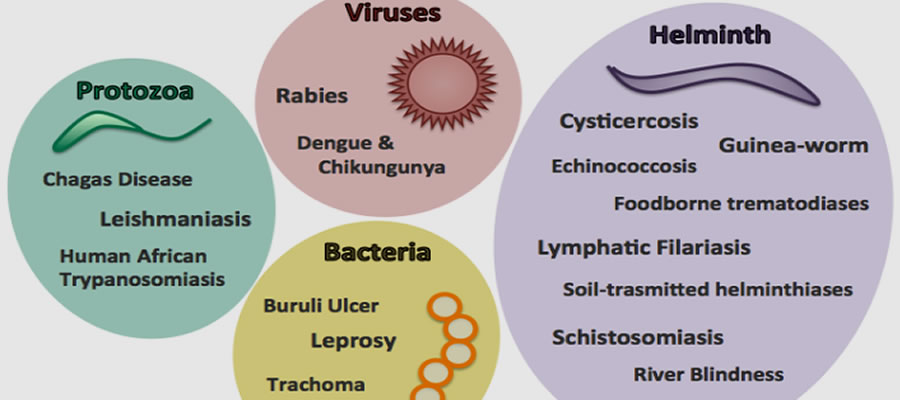

Disability
Introduction
Persons with disability (PWD) are unable to or are restricted in the performance of specific personal or social tasks/activities due to the loss of function of some part of the body as a result of impairment or malformation (Ghana Statistical Service, 2013). A person is however considered disabled if despite the use of assistive devices or supportive environment such as eye glasses and hearing aids, the limitation/restriction cannot be improved.
Disability is generally stigmatized in Ghana and deeply rooted in the traditional belief systems of the people. In many instances PWDs are hidden from society and not adequately supported at both the family and institutional levels to function fully and integrate into society. PWDs therefore generally have insufficient access to health care, education, employment opportunities, disability-related services, are excluded from everyday life activities, stigmatized and abused and lack access to appropriate physical infrastructure (Ghana, 2013 ICPD+20 report).
Consequently, their wellbeing- physical, emotional, psychological and social- is affected. These challenges may even be more pronounced in rural areas where the required support and knowledge about the various forms of disability may not be available. The result is that many PWDs are impoverished and marginalized.
In the past few years, there have been several interventions by the Government of Ghana working in collaboration with key stakeholders to improve the quality of life of PWDs. The prospect for better education, employment etc. has been enhanced with the creation of a conducive environment to enable PWDs to contribute meaningfully to the development of the country.
The 1992 Constitution guarantees the fundamental human rights of all persons including persons with disabilities (PWDs). In 2012, Ghana ratified the Convention on the Rights of Persons with Disability which mandates Government to address challenges confronting PWDs. Programmes such as the Livelihood Empowerment against Poverty (LEAP) and the allocation of a percentage of the District Assembly Common Fund as grant for PWDs to support capacity building are expected to improve the quality of life of PWDs.
In order to understand the situation of PWDs to guide policy and programming, the Ghana Statistical Service, for the first time, collected specific data on PWDs in the 2010 Population and Housing Census. This chapter discusses the population with disability, types of disability and disability type by economic activity.
Population with Disability
The district recorded one of the least percentages of disability in the Eastern Region. Table 6.1 presents the population with disability in the Akyemansa District. It shows that the vast majority of the population are without disability (97.6%). Out of the total population of 97, 305, only 2.4 percent are with some form of disability. The table further shows that there are equal proportions of both males (2.4%) and females (2.4%) with disability.
The table further indicates that with the total population males with sight disability are higher (37.5%) and among the same sex it is with those with hearing disability with the least (13.1%). Data on the females indicates that it is the females with sight disability who are in the majority (38.0%) and the least is with intellectual disability (11.6%).
In the urban locality the data shows that the population without disability is 97.4 percent for the total with more females with disability than males 97.5 percent and 97.3 percent respectively. The population in the urban setting without disability is very minimal with a little above two percent (2.6%) for the entire district and again with very variations among the sexes. Females with sight disability is high in the district with 38.7 as against 38.2 percent for males indicating that sight disability is more pronounced in the district than all other forms of disability as shown by the table. Among the males hearing disability is least (9.3%) in the district whereas with females it is those with intellectual disability (7.7%).
Table 6.1 also indicates that in the rural areas a similar percent almost same as what pertains in the urban setting applies here with more than 97 percent of the population without any form of disability (97.7%) with just a small proportion with disability in the district for the rural dwellers (2.3%). With the sexes it is same for both males and females with 2.3 percent. A detail look at the tables shows that here again sight disability is more pronounced than all other forms of disability with the females having 37.6 percent against 37.1 percent males which shows a marginal difference.
It is interesting to point out here that the pattern is same for the urban locality with respect to hearing and intellectual disabilities in that whereas the least disability type among the males in the urban areas is hearing and for females intellectual its repeated here in the rural areas (15.4%) and (13.9%) respectively. It could be concluded that the main type of disability in the district is sight and hearing.
It is interesting to point out here that the pattern is same for the urban locality with respect to hearing and intellectual disabilities in that whereas the least disability type among the males in the urban areas is hearing and for females intellectual its repeated here in the rural areas (15.4%) and (13.9%) respectively. It could be concluded that the main type of disability in the district is sight and hearing.
The most common disability types for both sexes are visual impairment and physical disability constituting 37.5 percent and 33.8 percent respectively for males and 38.0 percent and 33.8 percent for females respectively. Other common disability types for females include hearing disability (18.8%) while those for males include speech disability (18.8%). Intellectual disability is the lowest among females (11.6%) and hearing disability is the lowest among males (13.1%).
Distribution of Disability by Type of Locality
Table 6.3 shows that persons with disability constitute 2.6 percent of the urban population and 2.3 percent of the rural population of the district. The leading disability type in both urban and rural localities is visual impairment with almost equal proportions in urban (38.4%) and rural (37.3%).
The next main disability type in both urban and rural localities is physical disability with equal proportions in both localities. The least disability type for both urban (11.3%) and rural (14.7%) localities is intellectual disability with a comparatively higher proportion in the rural population.
There are variations between the sexes with regard to hearing impairment and physical disability in the urban localities. The proportion of females with hearing impairment (16.3%) is almost twice the proportion of males (9.3%) while the proportion of males with physical disability (15.0%) is also about twice the proportion of females (7.7%). In the rural areas there are almost equal percentages of males and females for all the disability types.
There are similar trends within urban and rural areas with visual impairment recording the highest type of disability in both urban and rural localities. Females in both localities recorded the higher percentages of visual impairment compared to males. The least form of disability for males and females in urban localities is hearing impairment (9.3%) and intellectual disability (7.7%). While in the rural areas the least form of disability type is intellectual disability for both males (15.5%) and females (13.9%).
Disability and Activity
Table 6.3 shows the population 15 years and older with disability by economic activity status. The table shows that the proportion of the population 15 years and older without disability and employed constitute 74.5 percent while persons with disability and employed constitute 54.5 percent. The table reveals that those with no disability and unemployed are just 2.0 percent with 23.5 of these same groups being economically not active. Persons with visual disability and employed constitute 62.7 percent while 1.4 percent with hearing and speech disability are unemployed with persons with physical disability not economically active constitute 60.6 percent.
Males with speech disability employed are 65.5 percent with 40.3 percent with other forms with disability being employed. Of those with physical disability 1.4 percent are unemployed and the least is with those with intellectual disability. Of the persons with other forms of disability 59.7 percent are not economically active as against 33.8 percent with speech problems being economically not active.
Exactly 61 percent of females with visual disabilities are employed as shown by the table and the least employed are those with intellectual disabilities (25.4%). Of the females with emotional disability 2.2 percent are unemployed against 73.7 percent with intellectual disabilities economically not active.
Disability, Education and Literacy
Distribution of Population with Disability by level of Education
Disability types and level of education for persons 3 years and older is shown in Table 6.4. Generally, education enhances the employment opportunities of all persons in Ghana, including persons with disability. Consequently, the government and various social welfare agencies have been implementing policies to improve access to education for persons with disabilities at all levels. Table 6.4 presents the population three (3) years and older with disability disaggregated by level of education and disability type.
Among the various types of disabilities, 43.6 percent have never being to school with 47.6 percent with basic education and just a little over 6 percent in SHS and higher education. Of those with hearing disability 58.4 percent have never being to school, sight 39.3 percent. The data shows that those with speech impairment 4.5 percent with preschool education, physical 1.4 percent, 50.7 with sight disability with basic as well as hearing 35.2 percent and with those with SHS or higher education sight has 6.7 percent and intellectual with 3.1 percent.
The Table shows that in the Akyemansah District among the males with some form disability, those with hearing 47.6 percent have never been to school and the least who have never been to school is the visual impairment with 28.5 percent. At the pre-primary level disability is greatest for those with speech (5.9%) and the least is emotional disability (1.8%0. The male proportions increases with for the males at the basic school level recording as high as 59.1 for sight and a low of 42.0 for hearing. The number dwindles again as the people move higher on the education ladder with those with physical disability 9.6 percent for SHS and higher and 4.3 with intellectual disability.
With respect to the female population with disability, those with hearing problems are the highest with 65.6 who have never been to school and the small proportion is with sight disability. The proportion of females with disability at the pre-primary level those with speech are 2.9 percent and physical less than one percent (0.5%). The situation with those with basic education follows the pattern of the females with higher proportions compared with the other types of disability with females with other types of disability not classified with 47.5 percent and the least with hearing of 30.7 percent. Again at the higher level the proportions are very low those with physical disability having less than one percent (0.8%) and the highest is with those who have visual disabilities (5.2%).
In line with observations at both the national and regional levels Persons with disability constitute a small proportion of the population of the District. There are equal proportions of males and females with disability in the district. There are mainly slight variations in disability types affecting males and females and more persons with disability live in urban localities compared to rural localities of the district.
Even though persons with disability constitute a small percentage of the population, it is a segment of the population that requires a lot support to live meaningful lives and also be in a position to contribute to the development of the country. Interventions to support persons with disability should be strengthened and expanded to include both rural and urban areas where both family and institutional support may not be available.
Date Created : 11/23/2017 3:46:17 AM








 facebook
facebook
 twitter
twitter
 Youtube
Youtube
 +233 593 831 280
+233 593 831 280 0800 430 430
0800 430 430 GPS: GE-231-4383
GPS: GE-231-4383 info@ghanadistricts.com
info@ghanadistricts.com Box GP1044, Accra, Ghana
Box GP1044, Accra, Ghana